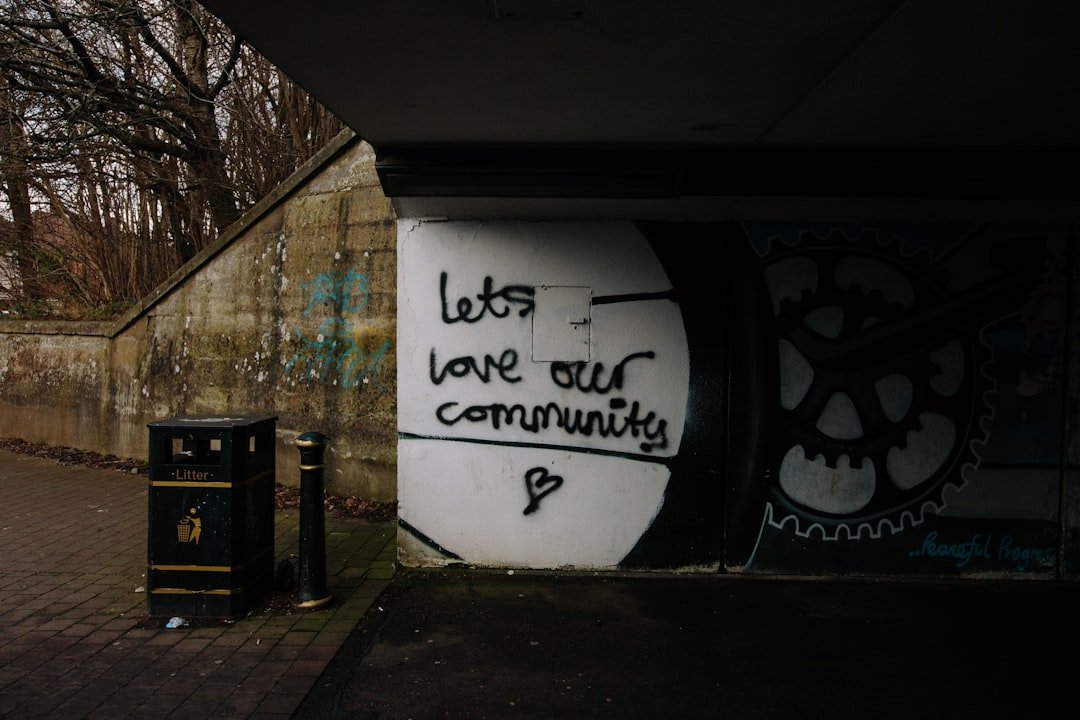In today’s hyper-connected world, a brand community is not just a nice-to-have; it’s a necessity. A thriving community fosters loyalty, enhances customer engagement, and ultimately drives revenue. When customers feel they are part of something larger than themselves, they are more likely to advocate for your brand, share their experiences, and return for repeat purchases.
This sense of belonging transforms transactional relationships into emotional connections, which are far more valuable in the long run. Consider the case of Harley-Davidson. The motorcycle manufacturer has cultivated a passionate community that extends beyond mere product ownership.
Their brand community is characterized by shared values, lifestyle choices, and a deep-rooted sense of identity. This connection not only boosts customer retention but also attracts new customers who aspire to be part of that lifestyle. By understanding the importance of a brand community, companies can leverage these emotional ties to create a sustainable competitive advantage.
Key Takeaways
- Building a brand community is crucial for fostering brand loyalty and advocacy
- Identifying your target audience helps in tailoring content and engagement strategies
- Creating engaging content is essential for capturing and retaining the interest of your community
- Utilizing social media platforms effectively can help in reaching and engaging with a wider audience
- Hosting events and workshops can provide valuable opportunities for community interaction and brand immersion
Identifying Your Target Audience
Uncovering Insights through Market Research
A deep understanding of your target audience is the foundation of any successful brand community. To gain this understanding, conducting thorough market research is essential. This involves utilizing surveys, focus groups, and social media analytics to gather data that will inform your community-building strategy.
Segmenting Your Audience for Personalized Engagement
Once you have identified your target audience, segment them into distinct groups based on demographics, psychographics, and behaviors. This segmentation allows for tailored messaging and engagement strategies that resonate with each group. For example, if your brand caters to both millennials and baby boomers, your approach should differ significantly. Millennials may prefer interactive content on social media platforms, while baby boomers might appreciate informative newsletters or community events.
Fostering Deeper Connections through Personalization
By understanding your audience, you can create a more personalized experience that fosters deeper connections. This personalized approach enables you to tailor your content and engagement strategies to meet the unique needs and preferences of each group, ultimately leading to a more loyal and engaged brand community.
Creating Engaging Content

Content is the lifeblood of any brand community. It serves as the primary means of communication and engagement between your brand and its members. To create engaging content, focus on storytelling that resonates with your audience’s values and experiences.
Share success stories from community members, highlight user-generated content, and provide valuable insights that address their needs. Moreover, diversify your content formats to keep your audience engaged. Incorporate videos, podcasts, infographics, and live Q&A sessions to cater to different preferences.
For example, if you’re in the fitness industry, consider sharing workout videos alongside nutrition tips and success stories from community members who have achieved their goals.
Utilizing Social Media Platforms
Social media platforms are powerful tools for building and nurturing brand communities. They provide an accessible space for members to connect, share experiences, and engage with your brand in real-time. Choose the platforms that align best with your target audience’s preferences—whether it’s Instagram for visual storytelling or LinkedIn for professional networking.
Engagement on social media should be a two-way street. Encourage conversations by asking questions, hosting polls, and responding promptly to comments and messages. For instance, if you run a beauty brand, consider hosting a weekly “Ask Me Anything” session on Instagram Live where followers can ask questions about skincare routines or product recommendations.
This not only positions your brand as an authority but also fosters a sense of community among followers.
Hosting Events and Workshops
In-person or virtual events can significantly enhance community engagement by providing opportunities for members to connect on a deeper level. Hosting workshops, webinars, or meetups allows you to share knowledge while fostering relationships among community members. These events can be tailored to address specific interests or challenges faced by your audience.
Take the example of Adobe’s Creative Jams—these events bring together creative professionals to collaborate on projects while showcasing their skills. Participants not only learn from industry experts but also network with like-minded individuals. By creating such immersive experiences, brands can strengthen their community ties and encourage ongoing engagement.
Encouraging User-Generated Content

User-generated content (UGC) is a powerful way to amplify your brand community’s voice while fostering authenticity. Encourage members to share their experiences with your products or services through photos, videos, or testimonials. This not only provides social proof but also empowers community members by making them feel valued.
To incentivize UGC, consider running contests or campaigns that reward participants for sharing their content. For instance, a travel brand could launch a photo contest where customers submit their best travel shots using a specific hashtag. The winning entry could receive a free trip or exclusive merchandise.
This strategy not only generates buzz around your brand but also strengthens the sense of community as members rally around shared experiences.
Providing Exceptional Customer Service
Exceptional customer service is crucial in building trust within your brand community. When customers feel heard and valued, they are more likely to engage positively with your brand and recommend it to others. Ensure that your customer service team is well-trained and equipped to handle inquiries promptly and effectively.
Consider implementing a dedicated support channel for community members where they can receive personalized assistance or advice. For example, if you run an e-commerce platform, offering live chat support can enhance the customer experience by providing immediate solutions to their concerns. By prioritizing exceptional service, you reinforce the idea that your brand genuinely cares about its community members.
Collaborating with Influencers and Partners
Strategic collaborations with influencers and partners can significantly expand your brand community’s reach and credibility. Identify influencers who align with your brand values and have an engaged following within your target audience. Collaborating with them can introduce your brand to new potential community members while leveraging their established trust.
For instance, if you’re in the health and wellness space, partnering with fitness influencers for co-branded content or events can attract their followers to your community. This not only enhances visibility but also adds value by providing diverse perspectives within your community. Ensure that these collaborations feel authentic; audiences can quickly detect insincerity, which can damage trust.
Offering Exclusive Benefits and Rewards
Creating exclusive benefits for community members can enhance loyalty and encourage ongoing engagement. Consider implementing a rewards program that offers discounts, early access to new products, or exclusive content for active participants within your community. This not only incentivizes engagement but also reinforces the idea that being part of your brand community comes with tangible benefits.
For example, Sephora’s Beauty Insider program rewards customers with points for purchases and engagement activities like writing reviews or attending events. Members can redeem these points for exclusive products or experiences, creating a sense of exclusivity that keeps them coming back for more. By offering such rewards, you cultivate a loyal customer base that feels appreciated and valued.
Soliciting Feedback and Implementing Changes
A successful brand community thrives on open communication and feedback loops. Regularly solicit input from community members regarding their experiences with your products or services. This not only demonstrates that you value their opinions but also provides valuable insights for continuous improvement.
Implementing changes based on feedback can significantly enhance customer satisfaction and loyalty. For instance, if multiple members express concerns about a specific product feature, addressing those concerns shows that you are listening and willing to adapt. This responsiveness fosters trust within the community and encourages ongoing dialogue.
Measuring and Analyzing Community Engagement
To ensure the effectiveness of your brand community initiatives, it’s essential to measure and analyze engagement metrics regularly. Utilize tools like Google Analytics, social media insights, and customer feedback surveys to track key performance indicators (KPIs) such as engagement rates, member growth, and content performance.
For example, if you notice higher engagement rates on video content compared to blog posts, consider shifting your focus toward more video-based initiatives. Continuous measurement allows you to refine your approach and ensure that your brand community remains vibrant and engaged. In summary, building a successful brand community requires a strategic approach that encompasses understanding your audience, creating engaging content, leveraging social media platforms, hosting events, encouraging user-generated content, providing exceptional service, collaborating with influencers, offering rewards, soliciting feedback, and measuring engagement metrics.
By implementing these strategies thoughtfully and consistently, brands can cultivate loyal communities that drive long-term success. As we look ahead in this ever-evolving digital landscape, the importance of fostering genuine connections within brand communities will only continue to grow. Brands that prioritize these relationships will not only thrive but also set themselves apart in an increasingly competitive marketplace.
The question remains: how will you elevate your brand community to new heights?
If you are looking to build a community around your brand, you may also be interested in learning about customer segmentation and targeting. Understanding your audience and how to effectively reach them is crucial in creating a strong community. Check out this article on customer segmentation and targeting to further enhance your brand’s community-building efforts.
FAQs
What is a brand community?
A brand community is a group of people who are connected by their loyalty to a particular brand. They come together to share their experiences, knowledge, and passion for the brand.
Why is it important to build a community around your brand?
Building a community around your brand can help create a loyal customer base, increase brand awareness, and generate valuable feedback and insights. It also allows for direct communication with your customers and can lead to increased customer retention and advocacy.
How can you build a community around your brand?
You can build a community around your brand by creating engaging and valuable content, fostering two-way communication with your customers, organizing events and meetups, and leveraging social media and online forums to connect with your audience.
What are the benefits of having a brand community?
Having a brand community can lead to increased customer loyalty, word-of-mouth marketing, valuable feedback and insights, and a sense of belonging and connection among your customers. It can also help in creating a strong brand identity and positioning in the market.
How do you maintain a brand community?
To maintain a brand community, it’s important to consistently engage with your community members, provide them with valuable and relevant content, listen to their feedback, and create opportunities for them to connect with each other and with the brand. Regular communication and transparency are also key to maintaining a brand community.



